|
From the first-ever $9 computer to lab-grown rhino
horns, this year has been filled with innovations that give us hope for
the future. The TI Innovation team compiled a list of our favorite
world-changing products and ideas that made significant progress over
the last year. We saw scientists make progress on some of the most
intractable diseases, buildings become smarter, and gender take center
stage. Some of these innovations are still nascent, while others have
already had a big impact. All have the potential to change the way we
live.
|
|
An algae-based gel stops bleeding in seconds.
VetiGel, an algae-based gel that can stop bleeding in just 12 seconds,
is set to start shipping to veterinarians this fall. After further
testing, humans may get it, too.
Created by biotech company Suneris, the gel quickly seals wounds and
stops traumatic bleeding, the leading cause of preventable death in
trauma victims.
Joe Landolina, Suneris’ CEO, was just 17 when he invented VetiGel. Five
years later, Suneris is about to ship its first batch.
VetiGel takes the fibers inside your everyday algae plant and injects
them into a wound. The fibers link together like LEGO blocks within
seconds, forming a leak-proof seal and stopping the bleeding process.
VetiGel doesn’t cause clots and it integrates over time into the damaged
tissue, so it never needs to be removed.
“The ability to stop a bleed quickly with no applied pressure is a
game-changer,” says Landolina. |
|
 |
|
This $9 computer is incredibly good.
Hardware is expensive. Chip is not. The world’s first $9 computer, which
began shipping this fall, can be used for everything from editing
spreadsheets to learning to code.
All you have to do is connect it to a monitor, keyboard, and mouse with
adaptors, and you’re in business. Amateur inventors can also create new
gadgets, like mobile printers or media players that use Chip as their
processors, keeping the overall cost of parts down.
Dave Rauchwerk, CEO of Next Thing Co., previously created a
GIF-generating camerapowered by the ever-popular Raspberry Pi, but the
microcomputer’s $35 price tag drove up the cost of the camera beyond
what’s reasonable for a toy.
Rauchwerk decided that in order to get the cost down his team needed to
create a new computer. Chip is a Linux-based mini-PC with a 1 gigahertz
processor, 512 megabytes of ram, and four gigabytes of storage. All
those specs add up roughly to a low-end smartphone with WiFi and
Bluetooth.
Ever since Next Thing Co. first started shipping units to its
Kickstarter backers in October, tinkerers have been sharing their
progress and ideas. “This will be my first ever foray into working with
small devices,” one backer writes. We suspect she’s not alone. |
|
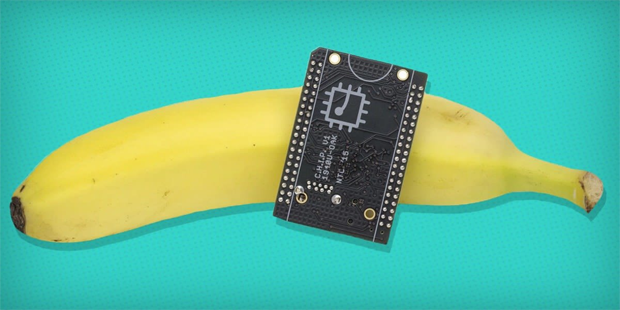
|
|
The first 3D printed drug is here.
This summer, the FDA approved the first 3D printed prescription drug, a
pill for epileptic seizures called Spritam. Eventually, this technology
could revolutionize the pharmaceutical world, making it possible to
create highly customized drugs.
“This is a milestone in the entire field,” says Michael Cima, an
engineering professor at MIT who helped develop the 3D printing used to
make Spritam. “You’re making millions of the same thing. The benchmark
is now higher for all these 3D printing technologies,”
One immediate advantage of 3D printed drugs is that they are porous and
will dissolve in your mouth with just a sip of water, making them easier
for people who have difficulty swallowing — such as people who are
having a seizure. It’s possible to make porous drugs the traditional
way, but it’s a lot harder and more expensive.
Looking ahead, the ability to print drugs might allow for more
customized medication. Other researchers have theorized that 3D printing
could be a cheaper way to produce drugs for the developing world. |
|
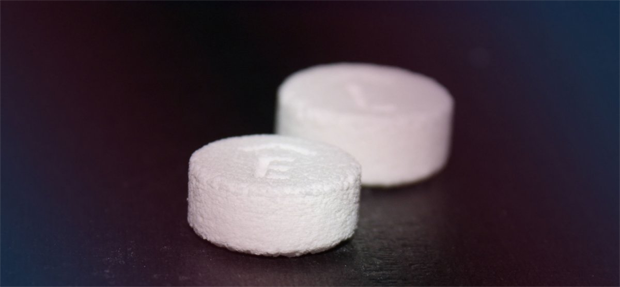
|
|
This solar-powered aircraft could bring internet
to the world.
Facebook’s plan to bring internet access to the developing world had two
breakthroughs this summer: prototyping a solar-powered,
internet-delivering aircraft, as well as a lab-tested laser that can
transmit data from that aircraft at 10 gigabits per second.
Together, the two could offer wireless internet to even the most
isolated regions.
Aquila, as the carbon-fiber plane is named, has the wingspan of a Boeing
737 and one-third the weight of an electric car. It can fly for 90 days
straight at an altitude above commercial air traffic and weather
patterns and beam connectivity down to people using lasers.
“We started the Connectivity Lab at Facebook to try to change this
paradigm by developing a new range of technologies to help accelerate
the process of bringing connectivity to the unserved and underserved,”
Yael Maguire, the company’s engineering director, tells Tech Insider.
Facebook says test flights for its aircraft should begin later this
year. Meanwhile, the company also recently announced a deal with French
satellite operator Eutelsat Communications that will use satellites to
beam internet across 14 countries in Africa. |
|
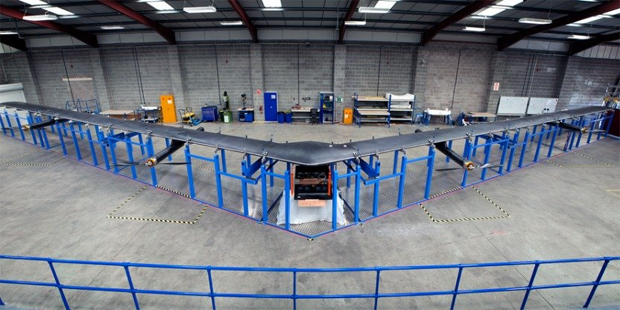 |
|
CRISPR-Cas9 unlocks the building blocks of life.
This year, scientists modified the building blocks of life using CRISPR,
a gene-editing tool that gives us the ability to rewrite DNA, ushering
in a new era of disease prevention and elimination, genetically edited
plants and animals, and possibly even “designer babies.”
The CRISPR-Cas9 system, dubbed “the biggest biotech discovery of the
century” by MIT, is essentially a “search-and-replace” tool for the
genome. Don’t want the code that’s related to a particular disease? The
tool can be used to snip or potentially swap it out.
“We’re basically able to have a molecular scalpel for genomes,” Jennifer
Doudna, a biologist credited as one of the co-discoverers of this
genetic editing system, told Tech Insider. “All the technologies in the
past were sort of like sledgehammers … This just gives scientists the
capability do something that is incredibly powerful.”
As Dustin Rubinstein, the head of a lab working with CRISPR at the
University of Wisconsin at Madison, told us, genetic editing could
transform everything from cancer research and neuroscience to chemical
engineering and even energy production.
“You’re only limited by your imagination,” Rubinstein said.
|
|
 |
|
The Omni Processor makes clean water profitable.
Who could forget the image of Bill Gates drinking poop water?
It was a cold January morning, and Gates was demoing the Omni Processor,
a new Gates Foundation-funded water purifier made by Janicki Bioenergy.
The machine turns human feces into drinkable water and valuable energy.
The Omni Processor is already being tested in Dakar, Senegal, and
Janicki is slated to sell the first full-size processor, which can
convert 14 tons of sewage into electricity and drinkable water each day,
to a utility company in Dakar next year, with more communities to
follow.
The key to the machine’s success is its ability to make money by
creating power.
“If you go into developing countries, it’s not the government providing
services,” says Gates Foundation’s senior program officer, Doulaye Koné.
“It’s entrepreneurs.”
So the Gates Foundation is helping create a system where the profit
margins are right for entrepreneurs who clean out the latrines in Dakar
neighborhoods to sell human waste to the utility company that owns the
Omni Processor.
Sanitation is usually a money-losing proposition in the developing
world, which is part of why governments and corporations aren’t invested
in making it better. But if you can make money on sanitation, suddenly
it’s a public health boon that pays for itself.
|
|
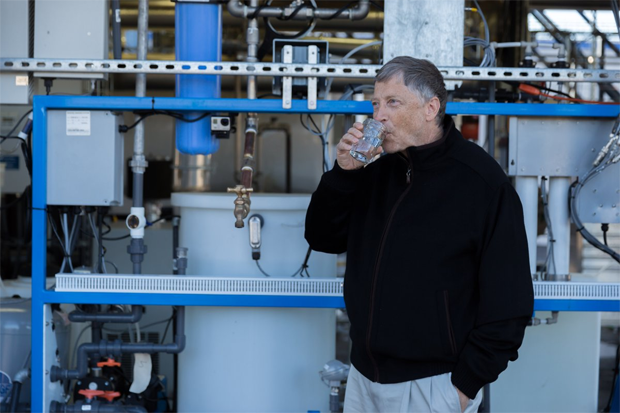 |
|
A tableware set makes it easier to eat with
Alzheimer’s.
Eatwell is a new tableware set that uses bright colors, ergonomics, and
clever design to make eating with cognitive decline easier. After
garnering attention as the winner of the 2014 Stanford Design Challenge,
it’s finally being released this month.
By 2050, an expected 131 million people will live with dementia, mostly
due to Alzheimer’sdisease. There is no cure, but smart design can
restore some of the confidence that disease takes away.
Creator Sha Yao designed Eatwell’s bowls with a slanted basin that
collects food on one side, so contents can be easily scooped up. Spoon
handles are curved to fit the natural alignment of the human hand, and
an anti-tipping cup includes a wide, sturdy base.
Yao selected shades of blue, red, and yellow because research shows that
a person with dementia can consume 24% more food and 84% more liquid
when they are served in brightly colored containers.
Brookdale, a leading assisted living provider, will host a pilot program
in its facilities for large-scale user testing later this year.
|
|
 |
|
The world rallies around a new Ebola vaccine.
Early tests suggest that a new Ebola vaccine developed this year may be
close to 100% successful. It’s a reminder that medical advances can
happen incredibly fast when the public and private sector work together.
Last year’s Ebola outbreak was the largest in history, infecting some
28,000 people in Guinea, Sierra Leone, and Liberia, and claiming more
than 11,000 lives. It sparked worldwide panic — and a call to action.
Developed by pharmaceutical company Merck and sponsored by the World
Health Organization, the Ebola vaccine (rVSV-ZEBOV) surpassed
expectations this summer when it was administered to over 4,000 subjects
in Guinea. A week out, not a single recipient had contracted the
disease.
More recently, researchers found one dose of the vaccine would protect
macaques within seven days of being infected with Ebola. Further testing
in more controlled conditions is required to show the vaccine’s true
effectiveness. It’s also impossible to know whether the protection
provided by the vaccine is long term.
What’s miraculous about this drug is not just the science behind it but
also how quickly it sped through the trial phase. Scientists, drug
companies, and governments worked togetherto get the vaccine through a
10-year process in just one year. |
|
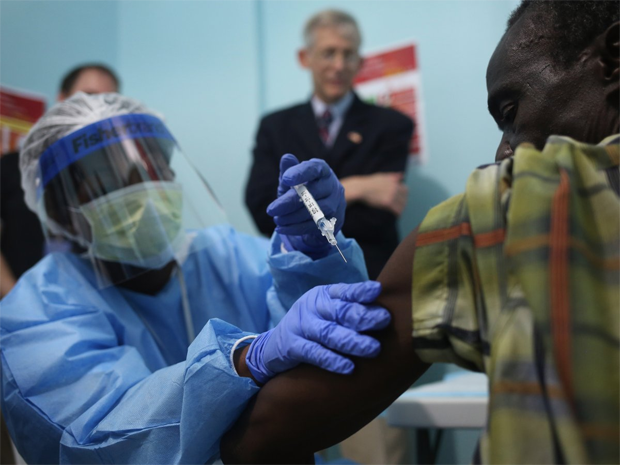 |
You can now build a skyscraper in 18 days.
Mini Sky City, a 57-story skyscraper in southern China that was built in
just 18 days, shows that it’s possible to build tall structures at
mind-bending speed.
The brainchild of a Chinese architecture company called Broad
Sustainable Building, Mini Sky City was built this year using modular
construction. That is, it was built piece-by-piece in a factory and then
put together on site.
Modular construction has been used in high-rise apartment buildings
elsewhere, but the founder of Broad, Zhang Yue, has plans to build an
even larger modular skyscraper. Dubbed Sky City, Zhang wants to build
the structure in just seven months (four for the foundation, three for
the building).
The 220-story building would be the tallest skyscraper in the world if
completed, but that’s still a big if: red tape has held up construction
for the last few years. Regardless of whether Sky City ever goes up,
Mini Sky City is a reminder that cities can grow faster than we think. |
|
 |
|
Ultra-precise weather prediction is within reach.
Satellite company Spire is on the way to providing better data on
weather than we have ever seen before. The company is doing it with a
fleet of mini satellites, with 20 going into orbit by the end of the
year and 100 planned for the near future.
These small and cheap satellites will deliver 10,000 data readings per
day by the end of 2015 — a full five-fold increase over the 2,000
readings a day delivered by publicly funded weather satellites,
according to CEO Peter Platzer.
With better data, we can more accurately predict, for example, if a
hurricane bearing down on the East Coast is a dangerous Sandy or a mild
Joaquin.
And it’s not just about numbers Spire’s satellites don’t “look” at the
Earth like conventional ones but rather listen. Using GPS Radio
Occultation technology, satellites receive GPS radio waves to collect
temperature, pressure, and moisture data, which meteorologists can use
to calculate predictions. |
|
 |
|
Genetically modified mosquitoes are fighting
diseases.
Oxitec is pioneering the use of genetically modified mosquitoes to
combat two painful, mosquito-borne viruses: dengue and chikungunya.
Oxitec cooks up mosquitoes in a lab and injects them with an additional
“self-limiting” gene. They release the non-biting male mosquitoes into
the wild, where they find and mate with female mosquitoes, who do bite.
Their offspring inherit the genes and die before they grow old enough to
reproduce. If the release is successful, the mosquito population crashes
and humans have a lower risk of infection.
More than 100 million of these “friendly mosquitoes” have been let loose
in field trials in Panama, the Cayman Islands, and Brazil — reportedly
reducing target mosquito populations by more than 90% in each case.
This spring, the company launched its first municipal partnership with
the city of Piracicaba, Brazil, where it began releasing mosquitoes over
a 10-month span. Brazil also hosts Oxitec’s year-old production
facility, where 2 million mosquitoes are made each week.
Meanwhile in America, the FDA is reviewing an Oxitec application to
release several million engineered mosquitoes in the Florida Keys, where
dengue arrived in 2009 and 2010.
|
|
 |
|
Google Translate makes traveling so much better.
In July, Google released a new feature for its Translate app that
provides instant visual translations for more than 20 languages, making
it possible to get around almost anywhere on your own.
Before this update, users had to hold up their phone to the image they
wanted to translate, take a photo, and wait. The new feature eliminates
that friction: users just hold their phone to the image, open the
camera, and watch as text is magically translated.
Want to check out a foreign menu? You can do it in seconds, flipping the
pages and watching the items get translated in real-time. Don’t know
what that sign means? Now you can find out instantly.
“For the future, we’re working to improve the quality of the languages
we currently support and to add more languages,” says Barak Turovsky,
product lead for Google Translate. “Breaking down language barriers is
what we’re working towards, so is our eventual aim to support as many
languages and writing systems as possible.”
|
|
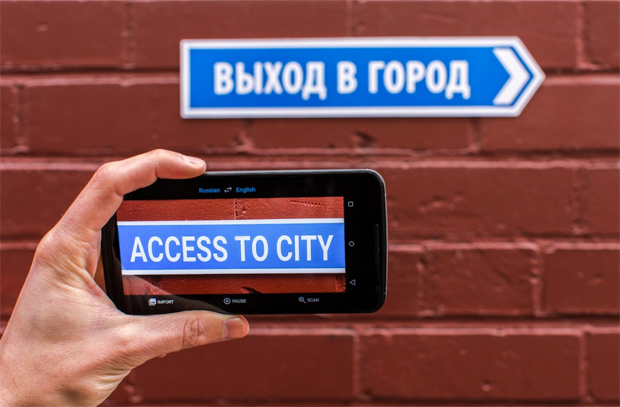 |
|
Lab-grown rhino horns will stop poachers in their
tracks.
This year, biotech startup Pembient figured out how to create real
rhinos horn in a lab — an innovation that could disrupt the deadly
practice of poaching, which has endangered the global population of
black rhinos.
The horns have been used in traditional Chinese medicine for thousands
of years and have increasingly become a status symbol. In South Africa
alone, the number of rhinos poached has increased by over 7,000% since
2007. According to Pembient, over 1,200 South African rhinoceroses were
poached in 2014, and the asking price for rhino horn has climbed above
$60,000 per kilogram.
Pembient uses yeast cells to create the same keratin that’s in rhino
horns. That keratin is combined with rhino DNA to form an ink for 3D
printing a horn with the same physical and genetic properties as a wild
horn.
“Right now, the poachers and wildlife trading syndicates are the ones
that are incentivized to kill wildlife due to the high prices various
wildlife products command,” Pembient founder Matthew Markus tells Tech
Insider. “By making bio-identical products we want to drop those prices
and destroy those incentives, thereby putting our competition out of
business.”
|
|
 |
|
A new vaccine could destroy dengue fever.
A worker fumigates a residential area in the Philippines to ramp up
defenses against dengue.
Later this year, French pharmaceutical company Sanofi Pasteur is
expected to license a dengue vaccine in 20 countries, a major milestone
in the World Health Organization’smission to reduce mortality from the
mosquito-borne virus by at least 50% by 2020.
Sanofi Pasteur announced last fall that its vaccine candidate — the
culmination of 20 years of research — may reduce the number of dengue
disease cases by 60% in children and adolescents for up to one year.
About half the world’s population is at risk for dengue, which causes
flu-like illness, sometimes severe pain, and occasionally a lethal
iteration of the disease.
Some of the vaccine’s success stems from its unconventional approach.
Scientists start with a yellow fever vaccine and swap some parts so that
the body identifies it as dengue and immunizes against the disease. That
strategy averts some safety issues that have tripped up other potential
dengue vaccines, though it also might explain the Sanofi vaccine’s
middling effectiveness.
Still, Sanofi Pasteur’s progress could mark the beginning of the end for
the virus, which has no approved treatment. The pharmaceutical company
has already begun manufacturing the vaccine, getting ready to save
millions from a painful, often debilitating disease.
|
|
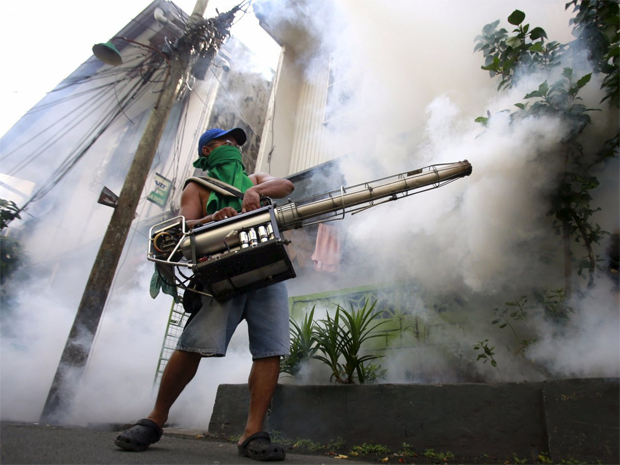 |
|
The password is finally dying.
What better password than your face?
If you’re still trying to remember passwords, then we’re sorry. A bunch
of forces are coming together to kill the annoying and flimsy web
password for good.
Fingerprint logins are at the forefront, offering a faster and more
secure way to sign into your phone, make purchases on Amazon and more.
In a short time, this feature has become essential for mobile devices.”
Last year, only Huawei and Apple could lay claim to having the
technology at a usable state, but now we have the Samsung Galaxy S6, HTC
One A9 and M9+, Xperia Z5 and Z5 Compact, and even the LG V10,” writes
The Verge.
Facial recognition passwords are another solution. Microsoft’s Windows
Hello boasts the ability to let you log in with your face, your finger,
or your eye.
Even Yahoo has a new trick to get around the password, letting users log
in by responding to a text message.
As for sites that still rely on passwords, more and more people are
switching to password managers like 1Password. Once you do, you won’t be
able to manage life without it.
|
|
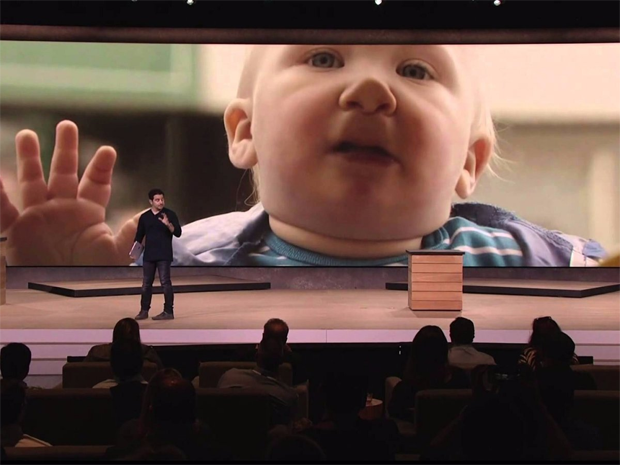 |